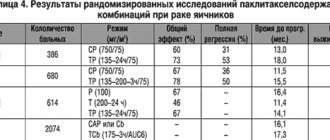Human albumin 20% 100ml 1 pc. solution for infusion
pharmachologic effect
Quantitatively, human albumin represents more than half of the total plasma protein and accounts for approximately 10% of the protein-synthesizing activity of the liver.
Human albumin has a corresponding hyperoncotic effect. The most important physiological functions of albumin are related to its contribution to the regulation of blood oncotic pressure, as well as its transport function. Albumin stabilizes the volume of circulating blood and is a carrier of hormones, enzymes, drugs and toxins.
Composition and release form Human albumin 20% 100ml 1 pc. solution for infusion
Solution for infusion - 1 ml:
- Active ingredients: human albumin - 200 mg;
- Excipients: sodium caprylate, sodium chloride, water for injection; sodium acetyltryptophan.
50/100 ml - bottles, cardboard packs.
Directions for use and doses
The dose of the administered human albumin solution is determined individually. When administering human Albumin, the patient's hemodynamic parameters and breathing should be monitored to prevent pulmonary edema. In addition, the patient's neurological status should be monitored to prevent increased intracranial pressure.
Human Albumin solution should be administered intravenously. Human Albumin solution should not be mixed with other medications, incl. whole blood and blood components, but may be used as a concomitant drug if medically appropriate.
Human Albumin solution cannot be diluted with water for injection, because this may cause hemolysis in patients. Human Albumin solution cannot be mixed with protein hydrolysates or solutions containing alcohol, because such combinations may result in protein precipitation.
Do not add other medications.
If the dose and rate of administration are not selected taking into account the concentration of the solution and the clinical status of the patient, the administration of human Albumin may lead to hypervolemia.
In patients receiving human albumin, it is necessary to monitor hemodynamic parameters to prevent the occurrence of hypervolemia and overload of the cardiovascular system.
Pharmacokinetics
Normally, the total metabolic pool of albumin is 4-5 g/kg body weight, with 40-45% located intravascularly, and 55-60% in the tissues. In conditions such as severe burns or septic shock, increased capillary permeability alters albumin kinetics and may cause abnormal albumin distribution. Normally, the average T1/2 of albumin is about 19 days. The balance between albumin synthesis and breakdown is usually achieved through a feedback mechanism. The elimination process occurs primarily intracellularly under the action of lysosomal proteases.
In healthy individuals, less than 10% of albumin administered intravenously leaves the intravascular space within the first 2 hours. There is significant interindividual variability in the effect of albumin infusion on plasma volume. In some patients, the blood plasma volume may remain elevated for several hours. However, in critically ill patients, albumin can leave the vascular bed in significant quantities and at an unpredictable rate.
Preclinical safety data
Human albumin is a natural component of human plasma and functions similarly to physiological albumin.
Single-dose toxicity studies in animals are of limited value and do not assess toxic or lethal dose or dose-effect relationships.
Repeated dose toxicity studies in animals are not feasible due to the formation of antibodies to the heterogeneous protein.
To date, there is no information regarding the embryonic and fetal toxicity, carcinogenic and mutagenic effects of human albumin. Animal studies also showed no evidence of acute toxicity.
Indications for use Human albumin 20% 100ml 1 pc. solution for infusion
Restoration and maintenance of circulating blood volume in case of insufficient volume and the advisability of using colloids, incl. Human albumin can be used for the following clinical conditions:
- shock - for emergency treatment in case of shock and in other similar conditions when urgent restoration of circulating blood volume is required;
- burns - albumin either in an isotonic solution or in a dextrose solution to prevent pronounced hemoconcentration and maintain the required electrolyte balance;
- hypoproteinemia with or without edema - in clinical situations usually associated with low plasma protein concentrations and leading to a decrease in circulating blood volume;
- hypoalbuminemia - when the lack of albumin is the result of insufficient synthesis, excessive catabolism, loss due to burns or injuries, or as a result of redistribution within the body.
Contraindications
Allergic reactions to albumin or any of the excipients.
Solutions of human Albumin cannot be diluted with water for injection, because this may cause hemolysis in recipients. There is a risk of hemolysis, with a potentially fatal outcome, as well as a risk of acute renal failure due to the inappropriate use of sterile water for injection for reconstitution of human Albumin.
Human albumin should be used with caution in conditions in which hypervolemia and its consequences or hemodilution may pose a particular risk to the patient. Examples of such conditions are: decompensated heart failure, hypertension, varicose veins, pulmonary edema, hemorrhagic diathesis, severe anemia, renal and postrenal failure.
Application Human albumin 20% 100ml 1 pc. solution for infusion during pregnancy and lactation
There are no data on the use of human Albumin in pregnant women and during lactation. Before prescribing the drug in each specific case, doctors should carefully evaluate the potential risks and benefits of using human Albumin.
The safety and effectiveness of human Albumin solution in pediatric patients has not been established, however, no additional risks of using this drug in children, in addition to the risks that exist when using it in adults, have not been identified.
special instructions
Allergic reactions/anaphylactic shock
Any suspicion of allergic or anaphylactic reactions requires immediate discontinuation of the drug. If shock develops, standard antishock therapy should be used.
Because this drug is made from human blood plasma, it may carry a risk of transmitting infectious agents, such as viruses and, theoretically, Creutzfeldt-Jakob disease. This also applies to unknown or new viruses and other pathogens.
The risk of pathogen transmission is reduced by screening plasma donors for possible past exposure to certain viruses, by testing for current infection with certain viral infections, and by inactivating and/or removing certain viruses. The measures taken are considered effective for enveloped viruses such as HIV, hepatitis B virus, hepatitis C virus, as well as for non-enveloped viruses such as hepatitis A virus and parvovirus B19. It is strongly recommended that each time Human Albumin is administered to a patient, the name and batch number of the drug are recorded in order to establish a connection between the patient and the batch of the drug.
Hemodynamics
Do not administer without careful monitoring of hemodynamic parameters, monitor for the development of symptoms of cardiac or respiratory failure, renal failure, or increased intracranial pressure.
Hypervolemia/hemodilution
Human albumin should be used with caution in conditions in which hypervolemia and its consequences or hemodilution may pose a particular risk to the patient. Examples of such conditions are: decompensated heart failure, hypertension, varicose veins, pulmonary edema, hemorrhagic diathesis, severe anemia, renal and postrenal failure. The rate of administration should be selected in accordance with the concentration of the solution and the hemodynamic parameters of the patient. Rapid administration may result in circulatory overload and pulmonary edema. At the first clinical signs of overload of the cardiovascular system (headache, shortness of breath, blockage of the jugular veins) or increased blood pressure, increased pressure in the central vein and pulmonary edema, administration of the drug should be stopped immediately.
Application in pediatric practice
The safety and effectiveness of human Albumin solution in pediatric patients has not been established, however, no additional risks of using this drug in children, in addition to the risks that exist when using it in adults, have not been identified.
Large volumes
When replacing relatively large volumes, it is necessary to monitor the parameters of the coagulation system and hematocrit level. It is necessary to ensure adequate replacement of other blood components (clotting factors, electrolytes, platelets and red blood cells). It is necessary to strictly monitor hemodynamic parameters.
Electrolyte status
When administering human Albumin, the patient's electrolyte status should be monitored, and the necessary measures should be taken to restore and maintain electrolyte balance.
Blood pressure
The increase in blood pressure after infusion of human Albumin necessitates careful monitoring of the patient after injury or after surgery in order to identify and treat damaged vessels that might not bleed at lower blood pressure.
Application, handling and disposal
Human Albumin solution should not be mixed with other drugs, incl. with whole blood and blood components, but may be used as a concomitant drug if medically appropriate.
Do not use if the solution becomes cloudy or the seal of the bottle is broken. Before use, preparations for parenteral administration should be visually inspected for the presence of mechanical inclusions and color changes, if the solution and container allow this. If leaks are detected, the drug must be thrown away.
There is a risk of hemolysis, with potentially fatal consequences, as well as a risk of acute renal failure when using sterile water for injection to dilute human albumin at concentrations of 20% or higher. Recommended solvents include 0.9% sodium chloride or 5% dextrose in water.
Impact on the ability to drive vehicles and operate machinery
There are no data on the effect of human Albumin on the ability to drive a car and work with other machines and mechanisms.
Overdose
Significantly exceeding the dose and increasing the rate of administration can lead to hypervolemia.
Side effects Human albumin 20% 100ml 1 pc. solution for infusion
Adverse adverse reactions according to clinical studies
There are no data on adverse reactions in controlled clinical studies of human Albumin.
Post-marketing adverse reactions
The following adverse reactions have been reported post-marketing. These reactions are listed by system organ class (SOC) using the preferred Medical Dictionary for Regulatory Activities (MedDRA) terms in descending order of severity:
- From the immune system: anaphylactic shock, anaphylactic reactions, hypersensitivity/allergic reactions.
- From the side of the central nervous system: headache.
- From the cardiovascular system: if it is necessary to use the drug during lactation, the issue of stopping breastfeeding should be decided; tachycardia, decreased blood pressure, flushing.
- From the respiratory system: shortness of breath.
- From the digestive system: vomiting, nausea, dysgeusia.
- From the skin: urticaria, rash, itching.
Local reactions: fever, chills.
Drug interactions
Interaction studies of human Albumin with other drugs have not been conducted (unknown due to the lack of relevant data in clinical studies, medical literature and safety reports).

